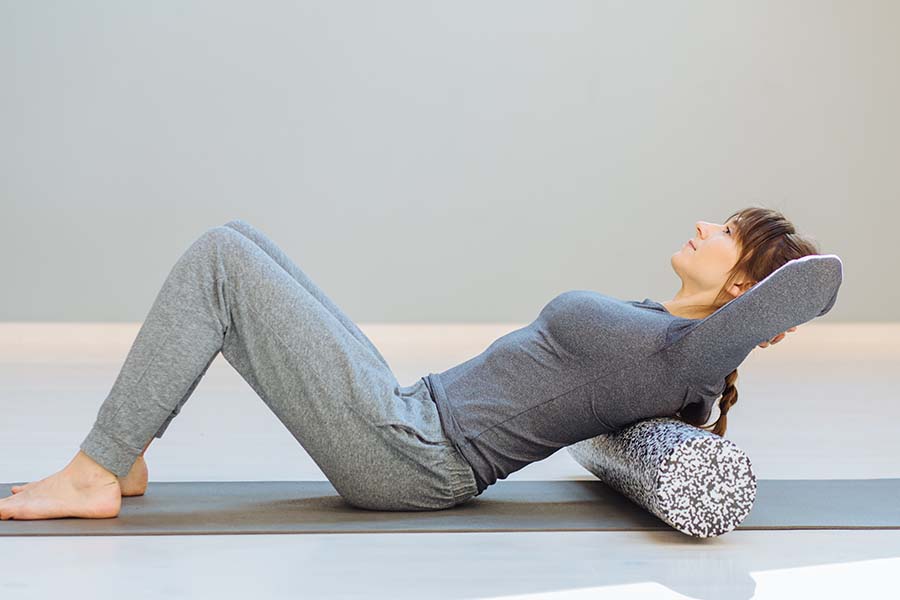Foam rolling, known as self-myofascial release, has gained popularity among fitness enthusiasts and athletes. It's a self-massage technique that uses a foam roller to target trigger points and tight areas in the body.
Let's be honest. Who doesn't love a good massage? But it comes with a lot of expenses, right? However, the beauty of foam rolling is that you don't need to shell out money for a professional massage therapist. With just a foam roller and a bit of guidance, you can reap the benefits of a deep tissue massage in the comfort of your own home.
Wait, there's more! Foam rolling may improve flexibility, increase range of motion, and reduce muscle soreness and pain. It can also improve circulation, speeding up recovery time after a workout.
So, whether you're an avid runner, weightlifter, or just someone who spends plenty of time sitting at a desk, foam rolling can be a game-changer for your overall health and well-being. Plus, it's a great excuse to lie on the ground and roll around like a kid again. So grab a foam roller, and let's get rolling!
Related Article: Six Best Foam Roller Exercises to Relieve Sore Muscles
What Is a Foam Roller?
A foam roller is a type of cylinder made of light foam used to perform self-administered deep tissue massage. It aims to release muscle knots, alleviate inflammation, and enhance comfort. It can also enhance your range of motion, flexibility, and mobility while improving circulation and lymphatic flow.
Related Article: How Effective Is an Ab Wheel Roller? 9 Benefits of Doing Ab Rollouts.
Types of Foam Rollers
Various foam rollers come in different sizes and firmness levels to produce varying results. These foam rollers can be customized to suit individual requirements, and depending on your specific needs, you can try out one or more of the following alternatives.
Soft, Low-Density Foam Rollers
If you are new to foam rolling or have a low tolerance for pressure, soft, low-density foam rollers can be an excellent option. These gentle foam rollers are designed to provide a less intense massage experience well-suited for individuals with many sensitivities.
Firm, High-Density Foam Rollers
The firm, high-density foam rollers exert more pressure on your body. These foam rollers are designed to provide a more profound, more intense massage experience that can be particularly effective in targeting tight muscles and promoting muscle recovery. However, you can add Post Workout Supplements to your routine to recover faster as well.
Textured Foam Rollers
Textured foam rollers are a type of foam roller that feature raised ridges, grids, or knobs on their surface. These unique designs are intended to provide a more targeted and profound massage experience by creating additional pressure points and digging deeper into the muscles.
As a result, textured foam rollers are often preferred by athletes and individuals seeking a more intense massage experience to alleviate muscle soreness and improve recovery. You can take Whey Protein Supplements to get better muscle and health.
Travel Foam Rollers
Travel foam rollers are ideal for individuals who prefer a portable option for foam rolling. These smaller foam rollers make them easy to carry to the gym, office, or wherever you go. They are particularly well-suited for massaging the arms and calves and can provide a quick and effective massage experience on the go.
Vibrating Foam Rollers
Vibrating foam rollers are a type of foam roller that use different vibration settings to provide a more intense and targeted massage experience that deeply loosens muscles and releases muscle knots. In addition to promoting muscle recovery, vibrating foam rollers can help improve circulation and flexibility by increasing blood flow.
Heat and Cold Foam Rollers
Heat and cold foam rollers are a type of foam roller that can be heated or cooled to provide a more customized massage experience. By applying heat or cold to the muscles, these foam rollers can help deepen muscle relaxation and alleviate discomfort.
Heat foam rollers are typically used to improve blood circulation and flexibility, while cold foam rollers are more commonly used to reduce inflammation and relieve pain.
Foam Roller Balls
Foam roller balls are foam rollers that can target specific body areas more precisely. These small, ball-shaped foam rollers are particularly effective at penetrating deep into muscles and providing a more targeted massage experience.
By using foam roller balls, individuals can focus on specific areas of tension and soreness, making them a valuable tool for athletes and individuals seeking to relieve muscle pain and improve flexibility.
Foam Rolling Sticks
Foam rolling sticks are foam rollers designed to apply direct pressure to areas of concern. These sticks are typically longer and thinner than traditional foam rollers, allowing for a more targeted and precise massage experience.
Related Article: Core Sliders: Add Excitement and Fun to Your Ab Workout
Foam Roller Exercises
To alleviate tightness and discomfort in your back, it's recommended to perform foam roller exercises three to four times a week, even if you experience improvement in your symptoms. The goal is to prevent or alleviate discomfort before it develops into a chronic condition.
If you are currently experiencing severe pain, waiting until you recover before attempting foam rolling exercises is best. You can perform the exercises on your own or as a warm-up or cool-down before or after your workout.
Ensure proper body alignment on the foam roller, and use a yoga mat for additional cushioning. When coming off the foam roller, be cautious and give your body up to 1 minute to rest before repeating an exercise or moving on to the next one.
1. Upper Back
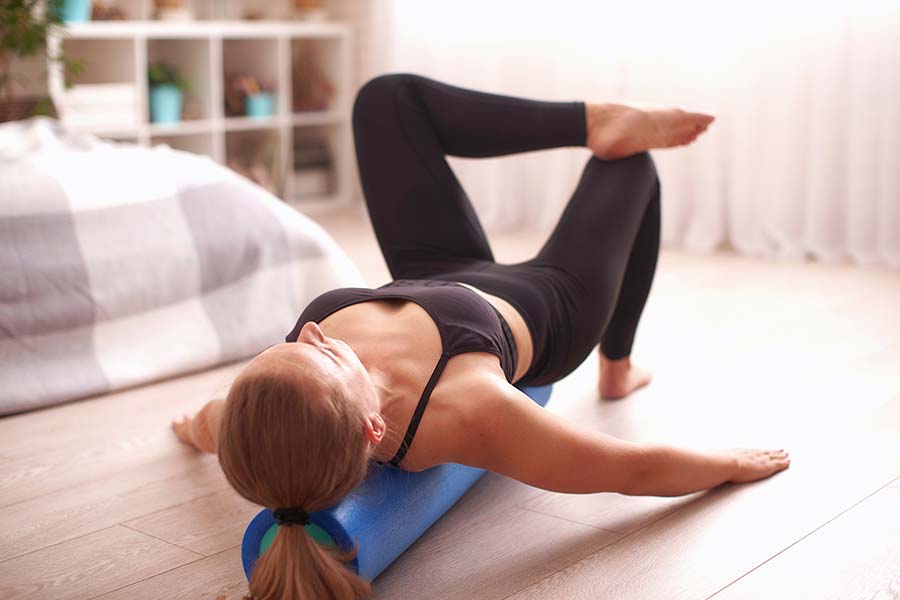
This foam roller exercise targets the upper back, relieving tension and poor posture caused by frequently leaning or hunching forward. It also helps align the head, neck, and spine for improved overall posture.
To do it,
- Start lying on your back with a foam roller under your spine, supporting your head and tailbone.
- Arch your knees, place your feet flat on the floor, and stretch your arms to the sides with your palms facing up.
- Take deep breaths and relax in this position for up to 1 minute.
- Repeat this exercise three times or as tolerated
2. Spinal Alignment
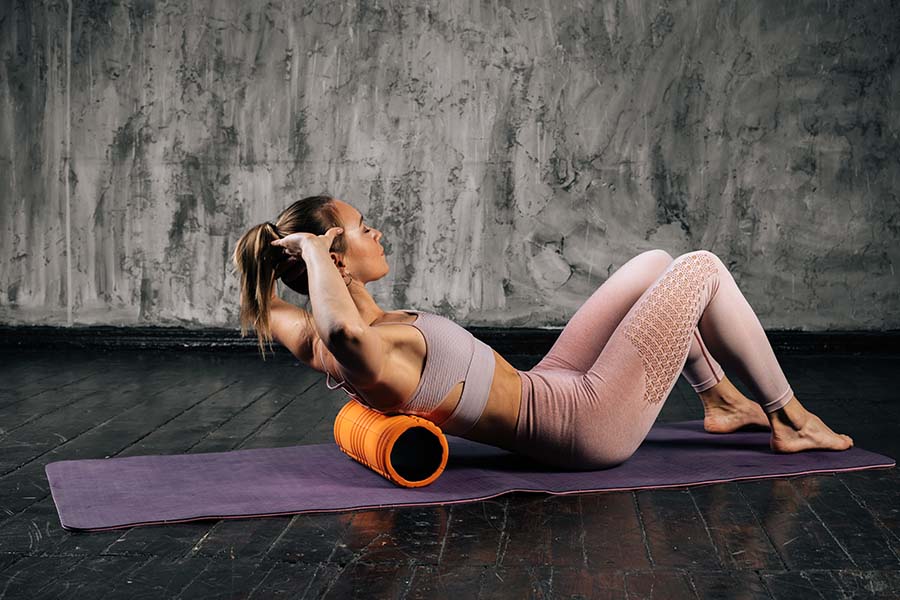
This rolling foam exercise is designed to align your spine, release muscle knots, and reduce tightness and tension. It's particularly beneficial for people who spend long periods sitting, as it promotes good posture. To avoid discomfort, it's recommended that you avoid rolling lower than your mid-back, where your rib cage ends.
To do it,
- Place the foam roller horizontally across your upper back, just below your shoulder blades.
- Arch your knees and press your feet firmly into the ground.
- Interlace your fingers at the base of your skull and lean back, allowing the roller to move up towards your shoulders.
- Focus on sensitive areas for at least 20 seconds, working your way up to your shoulders and then back down to your mid-back.
- Repeat this motion 4 to 5 times for optimal results.
3. Lats (Sides of Back)
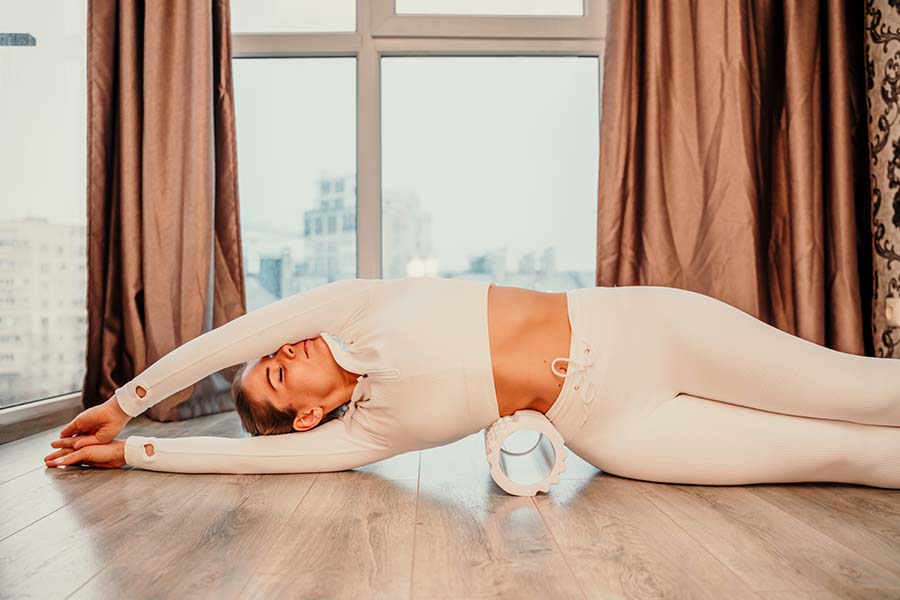
This foam roller exercise targets the lats and the muscles on the sides of your back. It helps alleviate tension below your underarms, improving posture and upper body mobility.
To do it,
- Lie on your right side with the foam roller under your shoulder.
- Keep your right leg on the ground for support, and press your left foot firmly into the floor.
- Start rolling below your armpit and slowly down towards your mid-back, pausing to target sensitive or sore areas.
- Continue this motion for up to 1 minute before switching to the opposite side.
- Repeat the exercise 2 to 3 times for the best results.
4. Low Back

This exercise can help relieve tension and tightness in your lower back, improve your mobility and flexibility, and promote better posture. The gentle rocking motion can also provide a soothing massage to the muscles in your back. Be careful not to apply too much pressure to the low back, which can cause discomfort or injury.
To do it,
- Lie down and position the foam roller horizontally under your lower back.
- Next, Arch your knees and place your feet firmly on the ground.
- Bring your knees towards your chest while placing your hands behind your thighs or shins.
- Gradually shift your weight to the right side, causing the left side of your lower back to lift off the foam roller.
- Pause briefly before gently rocking your weight towards the left side.
- Continue shifting your weight from one side to the other for a minute.
- Repeat the exercise 2-3 times.
5. Core

This exercise provides several benefits for your body. You can improve your posture and stability by strengthening your core muscles, reducing the risk of back pain and injuries.
It also enhances your overall balance and coordination, which can be helpful in various physical activities, such as sports or fitness. Additionally, regular practice of this exercise can help tone and sculpt your abdominal muscles, giving you a more defined and toned midsection.
To do it,
- Lie down with a foam roller along your spine, supporting your head and tailbone.
- Your arms should rest alongside your body, your feet pressing into the mat, and your knees bent.
- Engage your core muscles and press your low back into the foam roller.
- Next, lift your right hand and left knee toward the ceiling and return to the starting position before switching sides.
- One repetition is comprised of completing both sides.
- Do 8 to 16 repetitions in 1 to 3 sets or as tolerated.
6. Gluteus Maximus
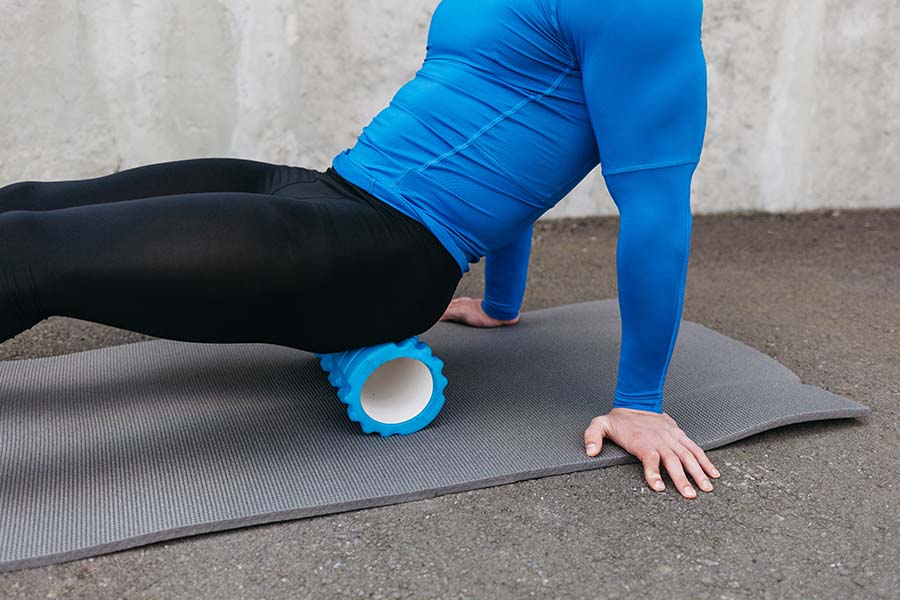
Foam rolling your glutes helps alleviate muscle tension and soreness in your hips and legs, improving overall mobility and flexibility.
It can also help increase circulation and reduce the risk of injury during physical activity. By strengthening the gluteal muscles, you can also improve your posture and balance, leading to better performance in various physical activities.
To do it,
- You can do this by sitting on the foam roller, which should be directly under your sitting bones.
- Then, arch your knees and place your feet flat on the ground, with your hands behind your hips for support.
- Place your right ankle outside your left knee and slightly lean to the right, feeling a stretch in your glutes.
- Roll from side to side, focusing on sensitive areas and holding each area for up to 30 seconds.
- Repeat the exercise on the opposite side.
Related Article: Ab Rollout - How to Do It, Muscles Worked, Variations & Common Mistakes
Conclusion
Foam rolling is a popular form of self-massage and myofascial release that can be done at home with minimal equipment. It includes using a foam roller to pressure muscles, promoting relaxation and relieving tension.
Foam rolling provides various benefits, including improved flexibility, increased range of motion, decreased muscle soreness, and reduced risk of injury. In addition, foam rolling can help enhance athletic performance and is an effective tool for injury rehabilitation.
By following the proper techniques and incorporating foam rolling into a regular exercise routine, individuals can experience the many benefits of this self-massage technique. However, it is vital to consult with a doctor before starting any new exercise program or if you experience any pain or discomfort during foam rolling.
Reading List
Article Sources
- Wiewelhove, Thimo, et al. 'A Meta-Analysis of the Effects of Foam Rolling on Performance and Recovery'. Frontiers in Physiology, vol. 10, Apr. 2019, p. 376. PubMed Central, https://doi.org/10.3389/fphys.2019.00376.








